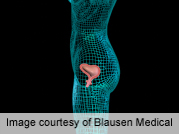- Double Mastectomy May Offer No Survival Benefit to Women With Breast Cancer
- Toxic Lead Found in Cinnamon Product, FDA Says
- Certain Abbott Blood Sugar Monitors May Give Incorrect Readings
- Athletes Can Expect High Ozone, Pollen Counts for Paris Olympics
- Fake Oxycontin Pills Widespread and Potentially Deadly: Report
- Shingles Vaccine Could Lower Dementia Risk
- Your Odds for Accidental Gun Death Rise Greatly in Certain States
- Kids From Poorer Families Less Likely to Survive Cancer
- Tough Workouts Won’t Trigger Cardiac Arrest in Folks With Long QT Syndrome
- At-Home Colon Cancer Test Can Save Lives
Over Half of Seniors Plagued by Incontinence: CDC


More than 50 percent of older Americans struggle with incontinence, a new government report released Wednesday shows.
“We found that half the population experienced urinary leakage or accidental bowel leakage, and about 25 percent had moderate, severe or very severe urinary leakage. And about 8 percent had moderate, severe or very severe bowel leakage,” said lead researcher Yelena Gorina, a statistician at the U.S. Centers for Disease Control and Prevention’s National Center for Health Statistics.
One expert noted that the impact of incontinence is significant.
“Bladder and bowel incontinence is a highly prevalent disease that has emotional, health, social and economic impacts in the daily life of our elderly population in the U.S.,” said Dr. Farzeen Firoozi, a urologist at North Shore-LIJ Health System in Manhasset, N.Y.
Incontinence occurs when muscles are too weak or too active. If the muscles are weak, patients may have accidents. If muscles become too active, there may be a strong urge to go to the bathroom. There are other causes of incontinence, such as prostate problems and nerve damage.
Treatment depends on the type of problem and may include simple exercises, medicines, special devices or procedures or surgery.
Dr. Tomas Griebling, a professor of urology at the University of Kansas and a spokesman for the American Urology Association, said incontinence increases with age.
However, “incontinence should really not be considered either a normal or inevitable part of aging,” he added.
Griebling noted that although the percentage of adults with incontinence has remained the same, as the population ages there will be more people with the problem.
According to the report, nearly 51 percent of people aged 65 and older living at home reported bladder and/or bowel incontinence. Bladder incontinence was reported by just under 44 percent and bowel incontinence by just over 17 percent.
About 50 percent of women and 25 percent of men said they suffered from bladder incontinence. White women were almost twice as likely to have bladder incontinence compared with black women, the researchers noted.
For people getting home health care, there was no significant difference in rates of incontinence by age, race and education. No matter where a patient lived, 45 percent of those getting home health care reported having difficulty with bladder and/or bowel control.
Women getting home health care were 1.7 times more likely to have bladder incontinence compared with men, the investigators found.
The CDC notes that there is a significant cost linked with incontinence. For example, in 2000 bladder incontinence cost adults an estimated $19.5 billion, and in 2010, the average cost for bowel incontinence was estimated at $4,100 per person.
The National Center for Health Statistics report was published in the June edition of the CDC’s Vital and Health Statistics.
More information
Visit the U.S. National Library of Medicine for more on incontinence.
Source: HealthDay
Copyright © 2024 HealthDay. All rights reserved.










